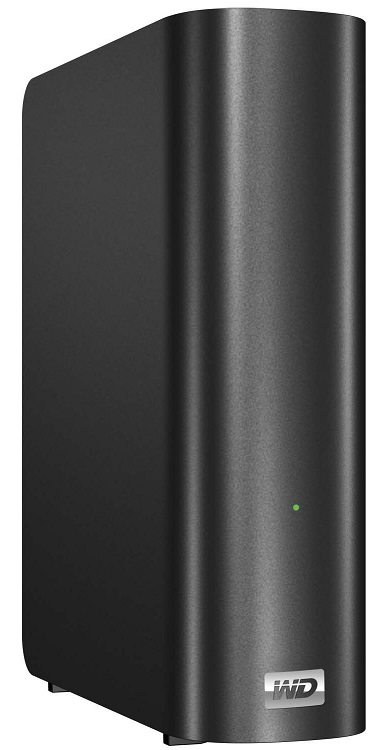My Book Live Data Recovery Case Study: Inaccessible NAS Device
In this data recovery case, our client had a Western Digital network-attached storage device. A network-attached storage device, or NAS, is accessible not via a USB cable, but rather by an ethernet cable. The device plugs directly into the user’s router, allowing anyone with access to the user’s network connection to access the NAS as well. Western Digital’s My Book Live and My Cloud products are personal NAS devices. They work just like external hard drives, but the user streams the data from them via their Internet connection instead of transferring it over a USB connection. But just like any external hard drive, they can fail. Gillware Data Recovery has experts who can recover data from all manner of personal NAS and small business NAS devices. This client came to us for our Western Digital My Book Live data recovery specialists‘ services.

My Book Live Data Recovery Case Study: Inaccessible NAS Device
Drive Model: Western Digital Caviar Green WD30ERZS-11J99B1
Drive Capacity: 3 TB
Operating/File System: Linux
Data Loss Situation: WD My Book Live NAS became intermittently hard to access. One day it just became completely inaccessible
Type of Data Recovered: Personal and financial documents, photos
Binary Read: 99.9%
Gillware Data Recovery Case Rating: 9
Inaccessible NAS Device
Every part of a given device is a potential failure point. Some points simply fail more readily than others. In general, the more complex a storage device is, the more failure points it has.
While the user might not be aware of it, NAS devices have a lot more inside them than a simple external hard drive. A WD My Book and My Book Live may look roughly the same, but the NAS device has to do a lot more. NAS devices need special parts to talk to the user’s router and connect to the Internet. And these special parts look a whole lot like what you’d find inside your computer! NAS devices even have their own operating systems—usually some flavor of Linux—managing things behind the scenes.
The Points of Failure in an Inaccessible NAS Device
A simple external hard drive—like, say, a Western Digital My Book—has a few failure points. First of all, you have all of the failure points from the hard drive itself. You have the control board, spindle motor, firmware, hard disk platters, and read/write headstack. On top of that, the USB-SATA bridging dongle in the external hard drive also represents two possible failure points. Either the dongle’s circuit board itself can fail, or the USB port can come loose or break off.
A NAS device takes all these failure points and tacks on a few more for good measure. In addition to all of the hard drive’s failure points, the NAS devices has its own motherboard, and even RAM and CPU that can fail. The operating system that manages the NAS can also fail. And while fixing your computer’s operating system when it crashes is easy (although it can be a headache of its own), doing the same without completely resetting your NAS and losing your data isn’t so easy.
Users of personal NAS devices don’t have access to the device’s specialized embedded Linux operating system for a reason. That reason, generally speaking, is ease-of-use. The operating system isn’t designed to be in-your-face. Rather, its purpose is to work in the background, out of sight and out of mind. The user may never even know that their NAS uses a version of Linux unless they do their homework. Normally, Linux filesystems and Windows filesystems get along like a child and estranged parent—one refuses to see the other. If a user tries to remove the drive (or drives) from their NAS device, even if the drive is perfectly healthy, it can display a device not detected error due to its filesystem.
WD My Book Live Data Recovery Results
While we cannot directly diagnose this client’s NAS as a whole, there were likely two points that failed in this WD My Book Live data recovery situation. The intermittent behavior of the NAS device likely could have been due to a developing glitch in its operating system, a connectivity issue, or any other growing problem with the device. Our engineers also found in working with the device’s hard drive itself that the hard drive was far from blameless.
The user’s hard drive had developed a handful of bad sectors on its platters. This in itself is not unusual. As a hard drive lives its life, some sectors are bound to go bad. The hard drive knows this, and has even prepared for this. It knows what to do when it encounters a bad sector and knows how to work around it. Sometimes, however, bad sectors pop up in just the right place. A single important sector gone bad can damage a user’s file. It can also damage the file system itself.
Even though the hard drive knows how to deal with bad sectors most of the time, it can still get caught off-guard. It’s a bit like driving a car in the middle of winter. Sometimes you know how to handle yourself on an icy road. Sometimes you careen into a ditch and total your Toyota.
After reading 99.9% of the hard drive’s binary structure, our technicians could analyze the drive’s Linux filesystem and recover the user’s files. The vast majority of their documents and photos were totally intact. We rated this WD My Book Live data recovery case a 9 on our ten-point scale.
